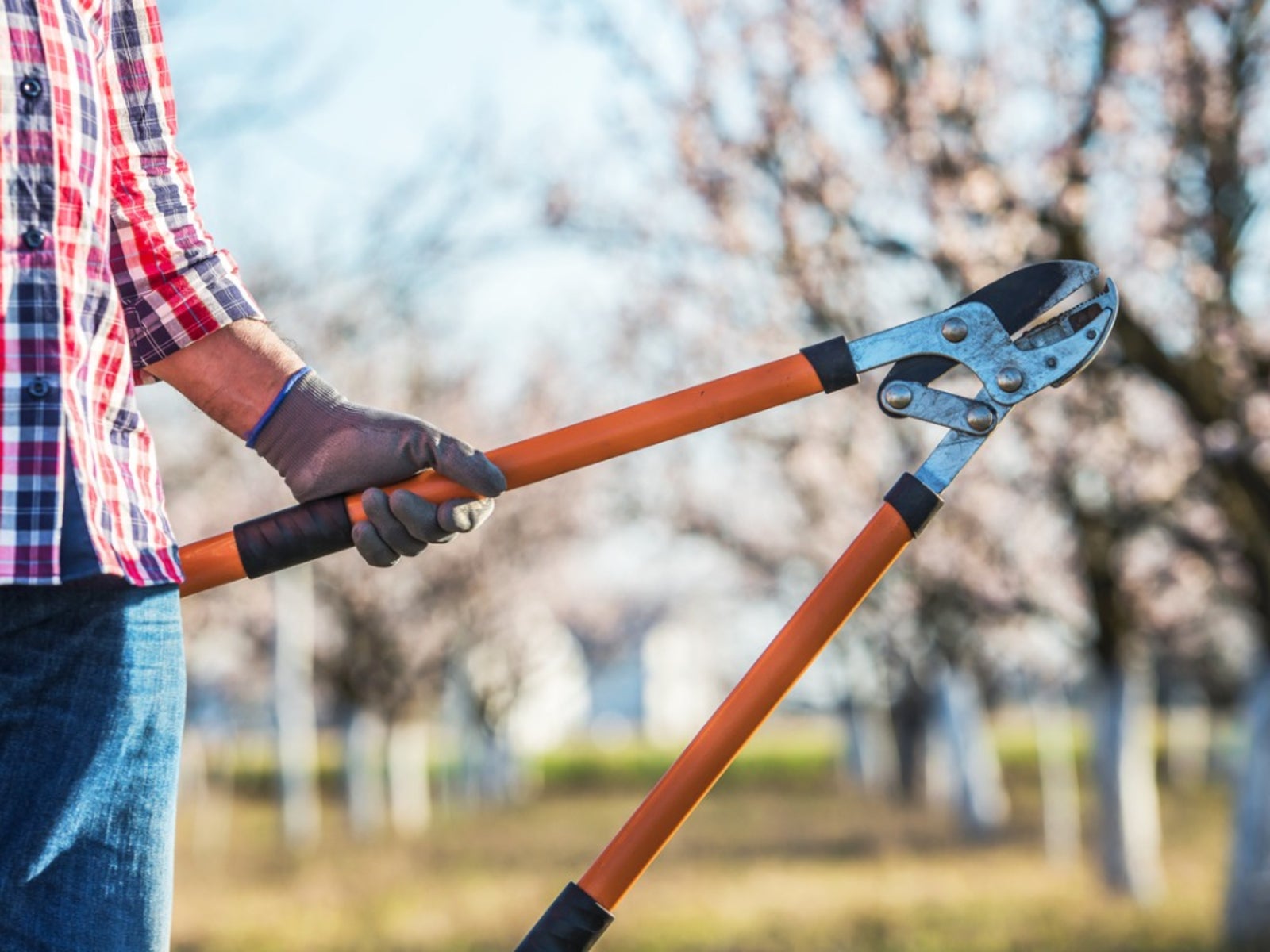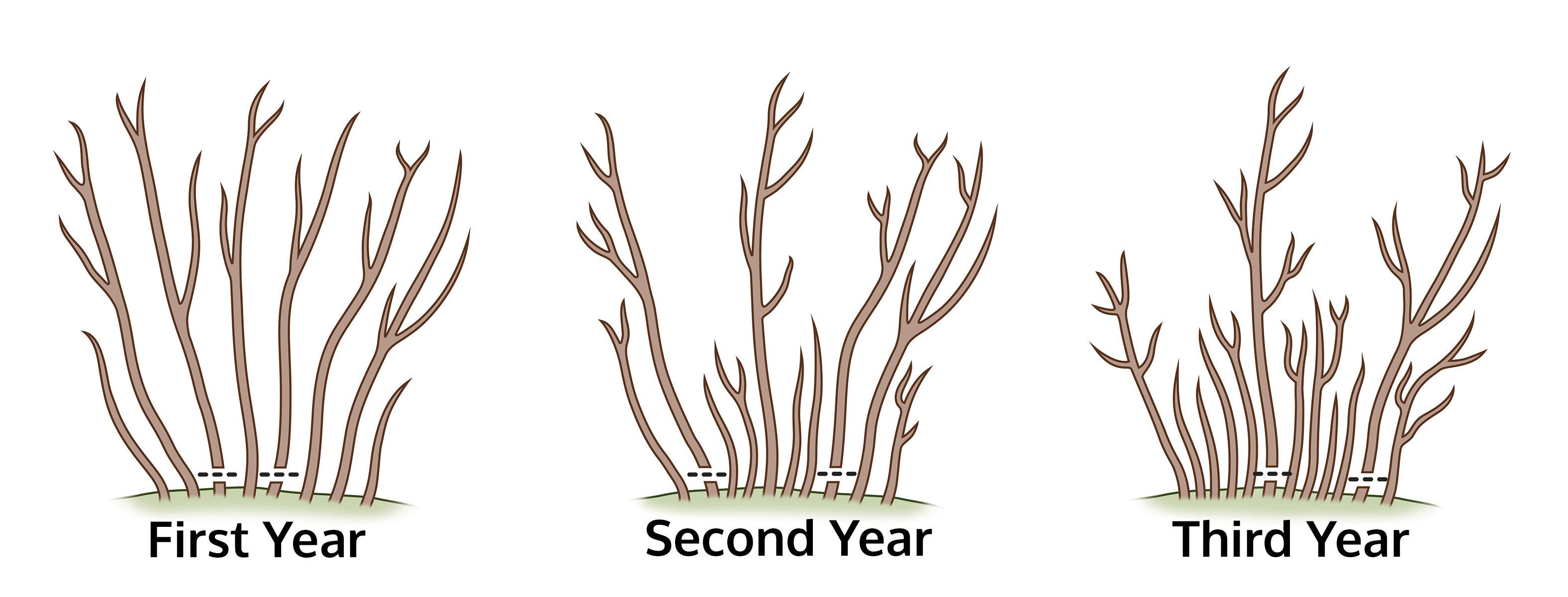What Is Rejuvenation Pruning: Tips For Hard Pruning Plants


Most shrubs need annual pruning to keep them from overgrowing their surroundings and developing thick, unproductive branches. Once a shrub is overgrown, the usual thinning and trimming methods won't correct the problem. Rejuvenation pruning is drastic, but if done properly, the result is like replacing the old shrub with a new one.
What is Rejuvenation Pruning?
Rejuvenation pruning is the removal of old, overgrown limbs so that the plant can grow new, vigorous branches in their place. Plants that require rejuvenation can be hard pruned or pruned gradually. Hard pruning involves cutting the shrub off to a height of 6 to 12 inches (15 to 30.5 cm.) above the ground and allowing it to regrow.
The disadvantages of this type of pruning are that not all shrubs tolerate drastic cutting, and, until the plant regrows, you are left with an unsightly stub. The advantage of hard pruning is that the shrub rejuvenates quickly. Gradual rejuvenation allows you to remove old branches over a period of three years. This technique is called renewal pruning.
Although it is slower than hard pruning, shrubs that are rejuvenated over a period of time look better in the landscape as they regrow. This method is particularly well-suited to caning shrubs.
How to Hard Prune Plants
If the stems you are going to cut are less than 1 3/4 inches (4.5 cm.) in diameter, use heavy long-handled pruners for the job. The length of the handles gives you more leverage and lets you make clean cuts. Use a pruning saw for thicker stems. Hard prune in spring before the buds begin to open.
Cut the main stems back to 6 to 12 inches (15 to 30.5 cm.) from the ground and cut back any side branches below the first cuts. The best place to cut is 1/4 inch (0.5 cm.) above an outward facing bud or node. Cut at an angle so that the highest part of the cut is just above the bud. Plants that require rejuvenation and respond well to hard pruning include:
Pruning Plants Gradually

In early spring, remove 1/3 of the canes, cutting them all the way to the ground or main trunk. Cut side branches back to the main stem. In the second year, cut 1/2 of the remaining old wood, and remove all remaining old wood the third year.
Sign up for the Gardening Know How newsletter today and receive a free copy of our e-book "How to Grow Delicious Tomatoes".
As you thin the shrub and the sun begins to penetrate to the center, new growth replaces the branches you have removed. This method isn't appropriate for all shrubs. It works best with shrubs that consist of several stems arising directly from the ground.
Shrubs with tree-like growth consisting of one main stem with several side branches are difficult to renew by this method. When shrubs have been grafted onto rootstock, the new branches come from the root stock. Plants that respond well to gradual rejuvenation pruning include:

Jackie Carroll has written over 500 articles for Gardening Know How on a wide range of topics.